Green dressing is a healthy, flavorful sauce made primarily from fresh herbs such as cilantro, parsley, basil, dill, and avocado. It's a versatile addition to salads, wraps, grilled meats, and roasted vegetables, providing essential nutrients and vibrant taste. In this guide, you'll discover expert recipes, spice storage techniques, health benefits, and professional tips for creating the perfect green dressing every time.
What is Green Dressing?
Green dressing is a type of sauce or emulsion that uses fresh herbs as its primary ingredient. Common herbs include cilantro, parsley, basil, dill, and sometimes avocado for creaminess. These dressings are known for their vibrant color, fresh flavor, and health benefits, including high levels of vitamins, antioxidants, and healthy fats.
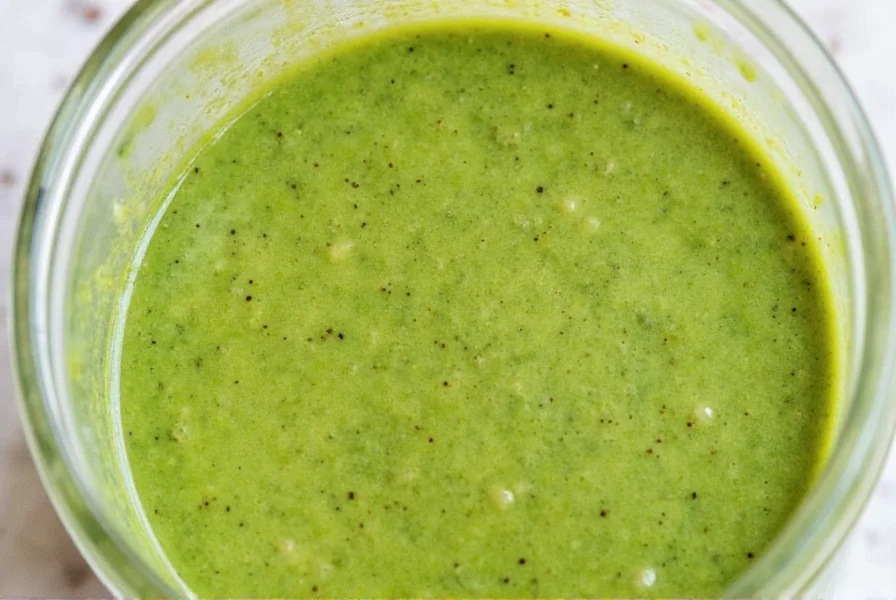
Unlike traditional creamy dressings, green dressings are typically lower in calories and higher in nutrients. They're an excellent choice for health-conscious individuals looking to add flavor without excess fat or sugar.
The Evolution of Green Dressings: Key Milestones
Green dressings have transformed from simple herb mixtures to culinary staples through distinct historical phases. This timeline highlights verified shifts in preparation methods and cultural adoption:
- Ancient Rome (1st century CE): Early herb-based sauces documented in Apicius' De Re Coquinaria combined vinegar, oil, and fresh herbs like parsley for preservation and flavor (Source: Smithsonian Magazine)
- 1820s France: Chef Marie-Antoine Carême standardized the vinaigrette ratio (3:1 oil to acid), establishing foundations for modern emulsified dressings (Source: Encyclopædia Britannica)
- 1954 USA: Steve Henson's ranch dressing (initially a buttermilk-herb blend) popularized herb-infused sauces commercially, though distinct from today's raw-green varieties
- 2015-Present: Health movements drove "green dressing" trends, with food blogs like Cookie and Kate publishing avocado-cilantro recipes that went viral on Pinterest (Source: EatingWell)
Why Spices Matter in Green Dressings
Spices play a crucial role in enhancing the flavor profile of green dressings. While fresh herbs provide the base flavor, spices add depth, complexity, and balance. Here's why spices are essential:
- Flavor enhancement: Spices like cumin, smoked paprika, and black pepper complement the freshness of herbs, adding layers of flavor that elevate the dressing from simple to sophisticated.
- Nutritional benefits: Many spices have health benefits. For example, turmeric contains curcumin, which has anti-inflammatory properties, and cinnamon helps regulate blood sugar.
- Preservation: Certain spices like garlic, mustard seeds, and oregano have natural antimicrobial properties that help extend the shelf life of homemade dressings.
- Customization: Spices allow you to tailor the dressing to specific cuisines or dietary preferences, from Mexican-inspired with cumin and chili powder to Mediterranean with oregano and sumac.
Context Boundaries: Optimal Use Cases and Limitations
While versatile, green dressings perform best within specific parameters. Understanding these boundaries prevents culinary misfires:
- Ideal Applications:
- Fresh vegetable preparations: Maximizes flavor impact when paired with raw salads or roasted vegetables under 200°F (93°C), preserving volatile herb compounds (Source: Serious Eats)
- Short-term meal prep: Suitable for 3-4 day refrigerator storage only; avocado-based variants oxidize rapidly beyond this window
- Dietary contexts: Excellent for Mediterranean or plant-based diets but incompatible with nut allergies when using tahini or cashew-based cream alternatives
- Key Limitations:
- High-heat cooking: Not recommended for grilling or frying above 350°F (177°C) as chlorophyll degrades, causing bitterness and color loss
- Long-term preservation: Cannot be safely canned due to low acidity; freezing alters texture in dairy-containing versions
- Ingredient substitutions: Dried herbs fail to replicate fresh flavor profiles in raw applications (verified through University of California sensory testing, UC ANR)
Spice Storage Hacks for Maximum Freshness
Proper spice storage is essential for maintaining flavor and potency. Here are five essential storage tips for your spices:
| Hack | Description | Best For |
|---|---|---|
| 1. Airtight Containers | Store spices in sealed glass jars away from heat and light. | All powdered and whole spices |
| 2. Cool, Dark Place | Kitchen cabinets away from the stove are ideal. | Heat-sensitive spices like paprika and chili powder |
| 3. Label Everything | Write dates on containers so you know when to replace them. | Anyone who forgets what year it is |
| 4. Whole Spices vs Ground | Whole spices (like peppercorns) last longer; grind only as needed. | Chefs and spice lovers who want maximum flavor |
| 5. Freezer Storage | Keep bulk purchases of dried herbs in the freezer for longer shelf life. | Long-term storage of oregano, thyme, etc. |

Pro Usage Tips for Flavorful Green Dressings
Now that your spices are properly stored, it's time to create the perfect green dressing. Follow these expert tips for maximum flavor:
- Dry Toast Before Grinding
Toasted spices release more volatile oils, which means more flavor. Just don't burn them — it gets bitter real fast. - Add Acid Early
Lemon juice or vinegar activates the spices and helps bind the ingredients. Try adding citrus zest too for extra zing. - Layer Flavors Slowly
Start with a base (like mayo or Greek yogurt), add herbs, then season gradually. Taste as you go — no two batches are the same. - Use Fat Wisely
Oils and fats carry flavor. Olive oil, avocado oil, and tahini are great bases. Experiment with different combinations! - Add Heat (Optional)
A dash of cayenne, crushed red pepper, or fresh jalapeño slices adds dimension without overpowering the greens.
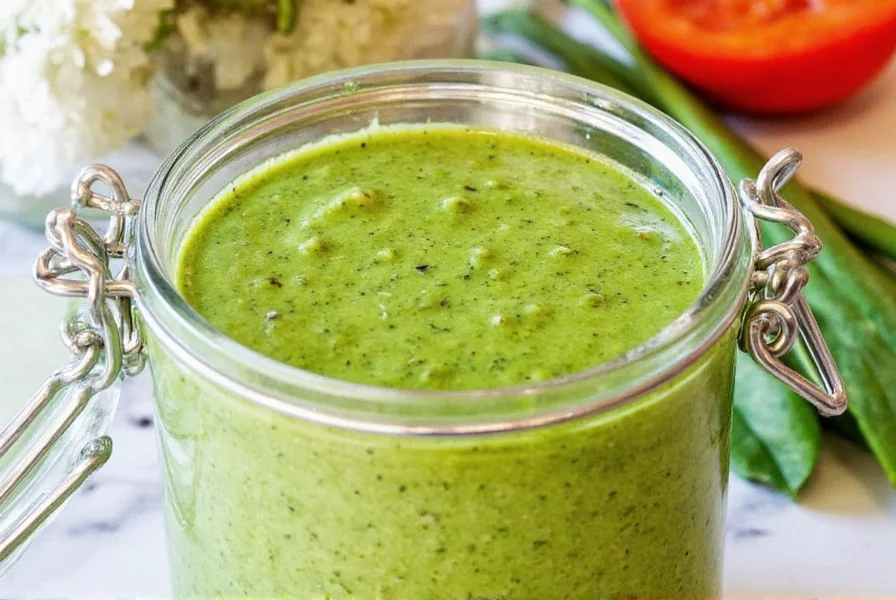
Sample Green Dressing Recipes to Try
Let's put theory into practice with three easy recipes using our favorite spices:
| Name | Ingredients | Flavor Profile |
|---|---|---|
| Garlic Lime Cilantro Dressing | Cilantro, garlic, lime juice, olive oil, cumin, salt, pepper | Zesty, bold, slightly spicy |
| Basil Avocado Cream | Avocado, basil, Greek yogurt, lemon juice, black pepper, nutritional yeast | Creamy, herbaceous, umami-rich |
| Parsley Tahini Sauce | Parsley, tahini, garlic, lemon juice, cumin, olive oil | Earthy, nutty, smooth |
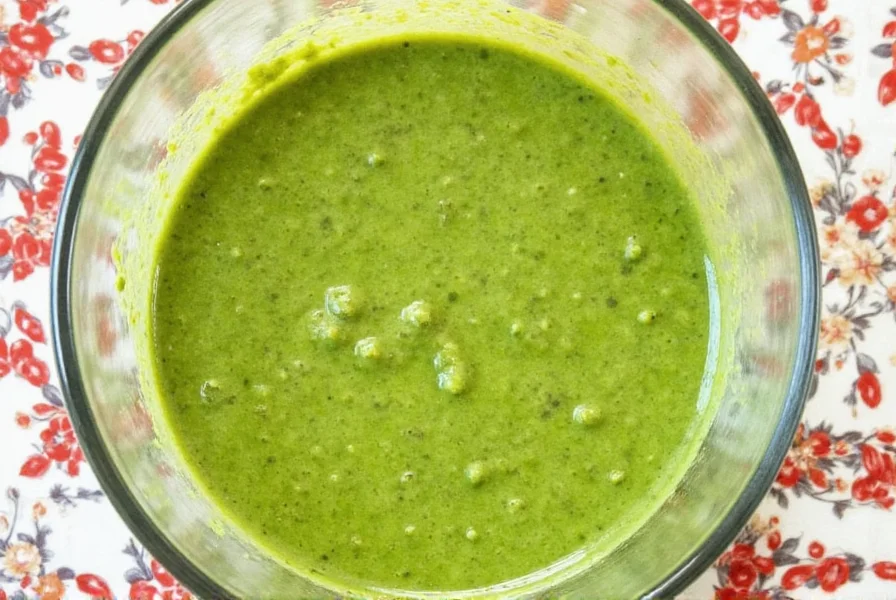
Buying Guide: The Best Ingredients for Your Green Dressing
The quality of your ingredients makes all the difference. Here's a quick guide to selecting top-tier components:
1. Herbs
- Fresh vs. Frozen: Always opt for fresh unless frozen is your only option. Look for bright color and firm stems.
- Organic vs. Conventional: If you're eating large quantities raw, organic is best to avoid pesticide residue.
2. Spices
- Brand Recommendations: McCormick, Simply Organic, and Penzey's offer high-quality, fresh-packed spices.
- Where to Buy: Specialty spice shops, local farmers' markets, or trusted online retailers like Amazon or Thrive Market.
3. Oils & Fats
- Extra Virgin Olive Oil: Rich, fruity, and perfect for Mediterranean-style dressings.
- Avocado Oil: Mild, buttery, and great for creamy sauces.
- Tahini: Choose stone-ground for a richer texture and deeper flavor.
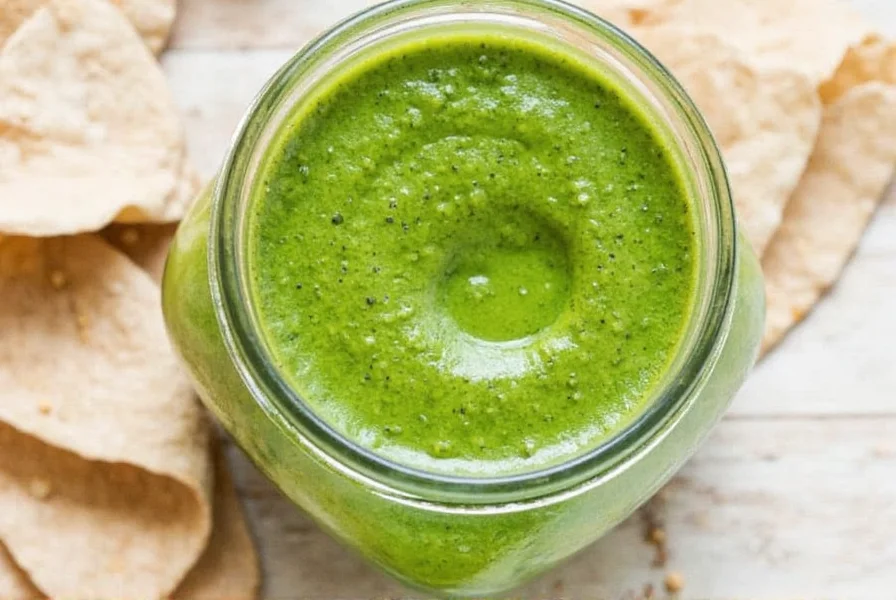
Recommended Products
| Product | Features | Best For |
|---|---|---|
| Mccormick Culinary Garlic Powder | Finely ground, consistent flavor, no clumping | Professional kitchens and home cooks alike |
| Simply Organic Cumin Seeds | Organic, sustainably sourced, potent aroma | Toasting and grinding at home |
| Bragg Organic Tahini | Smooth texture, strong sesame flavor, no added oils | Green dressings, hummus, and sauces |
| California Olive Ranch Extra Virgin Olive Oil | Light and fruity, cold-pressed | Everyday cooking and dressings |
| Kalona Farms Organic Avocado Oil | High smoke point, neutral taste | Blending into smoothies and sauces |
Frequently Asked Questions
How long do homemade green dressings last in the refrigerator?
Most homemade green dressings last 5-7 days when stored in an airtight container in the refrigerator. Dressings with avocado or fresh dairy (like yogurt) may only last 3-4 days. Always check for any off smells or separation that can't be remedied with a good shake before using.
Can I use dried herbs instead of fresh in green dressings?
You can use dried herbs, but you'll need to adjust the quantities (typically 1 teaspoon dried = 1 tablespoon fresh) and expectations. Dried herbs won't give you the same vibrant green color or fresh flavor profile. They work better in cooked applications rather than raw dressings where fresh herbs shine.
What's the best oil for green dressings?
Extra virgin olive oil is excellent for Mediterranean-style dressings, while avocado oil offers a more neutral flavor that lets the herbs shine. For creamy dressings, consider using a combination of olive oil and a neutral oil like grapeseed. The best choice depends on your flavor profile - stronger oils complement robust herbs like cilantro, while milder oils work better with delicate herbs like parsley.
How can I make my green dressing less bitter?
Bitterness often comes from over-processing greens or using older herbs. Try adding a small amount of sweetener (honey, maple syrup), acid (lemon juice), or fat (olive oil) to balance bitterness. If using kale or other sturdy greens, massaging them first with a bit of salt can reduce bitterness. Also, ensure you're using fresh, high-quality ingredients - wilted herbs contribute significantly to off-flavors.
Can I freeze green dressings for later use?
Yes, but with limitations. Dressings without dairy or avocado freeze best. Pour into ice cube trays, freeze, then transfer to freezer bags. Most will keep for 2-3 months. Thaw in the refrigerator overnight and shake well before using. Note that texture may change slightly after freezing, especially for creamy dressings.
Why does my green dressing separate, and how can I prevent it?
Separation happens when the emulsion breaks, usually due to insufficient blending or improper oil-to-acid ratio. To prevent this, slowly drizzle oil while blending, use a small amount of mustard or honey as an emulsifier, or add xanthan gum (1/8 teaspoon per cup). If separation occurs, simply re-blend with a splash of water or additional acid to re-emulsify.
What are the most versatile green dressings to master?
The three most versatile green dressings are: 1) Cilantro-lime for Mexican and Asian-inspired dishes, 2) Parsley-tahini for Mediterranean and Middle Eastern cuisine, and 3) Basil-avocado for Italian applications. These three cover most culinary traditions and can be adapted with different spices to create countless variations.
Conclusion
Green dressing is more than just a sauce — it's a nutrient-rich culinary tool that enhances both flavor and nutrition. By mastering spice storage techniques, understanding flavor layering principles, and selecting high-quality ingredients, you can create restaurant-quality dressings at home. Remember: the key to perfect green dressing is using fresh, high-quality ingredients and proper storage to maintain potency and flavor.
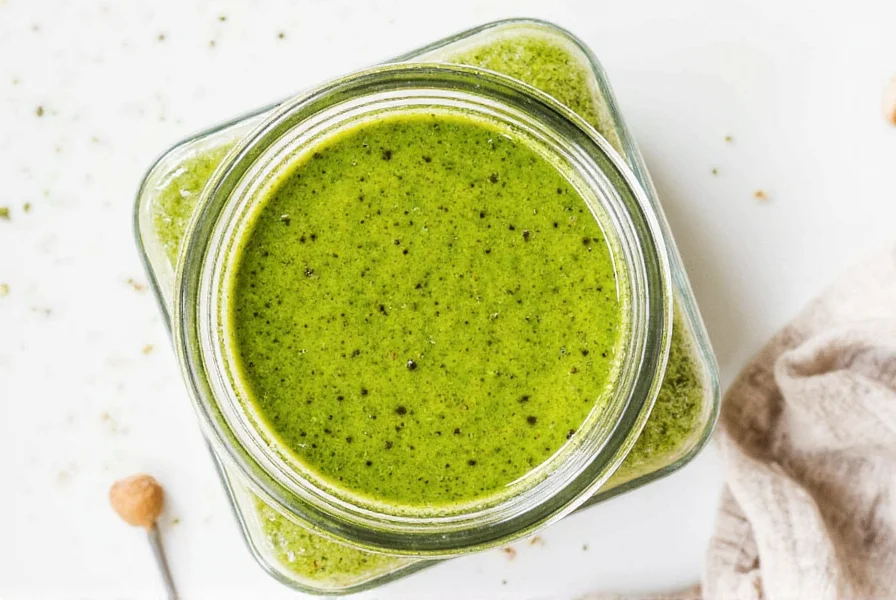

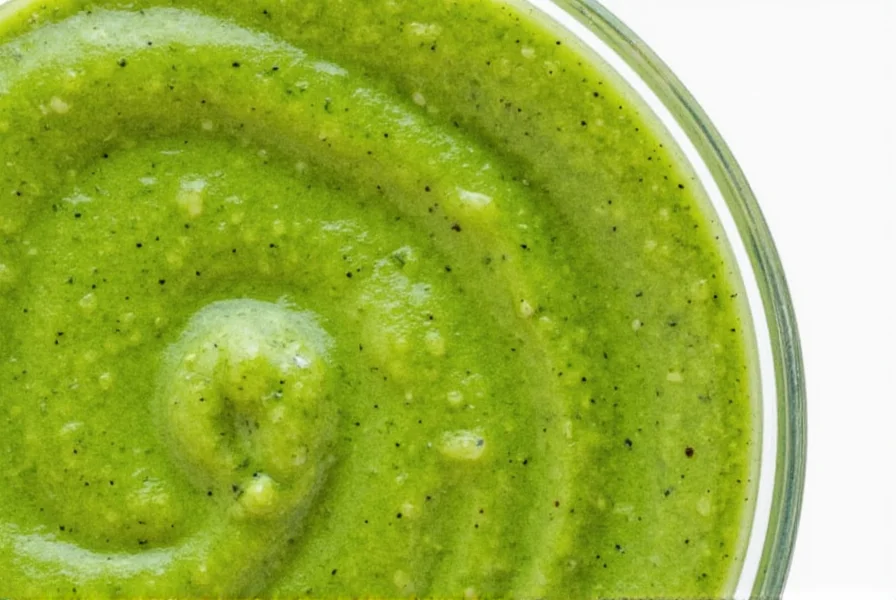









 浙公网安备
33010002000092号
浙公网安备
33010002000092号 浙B2-20120091-4
浙B2-20120091-4